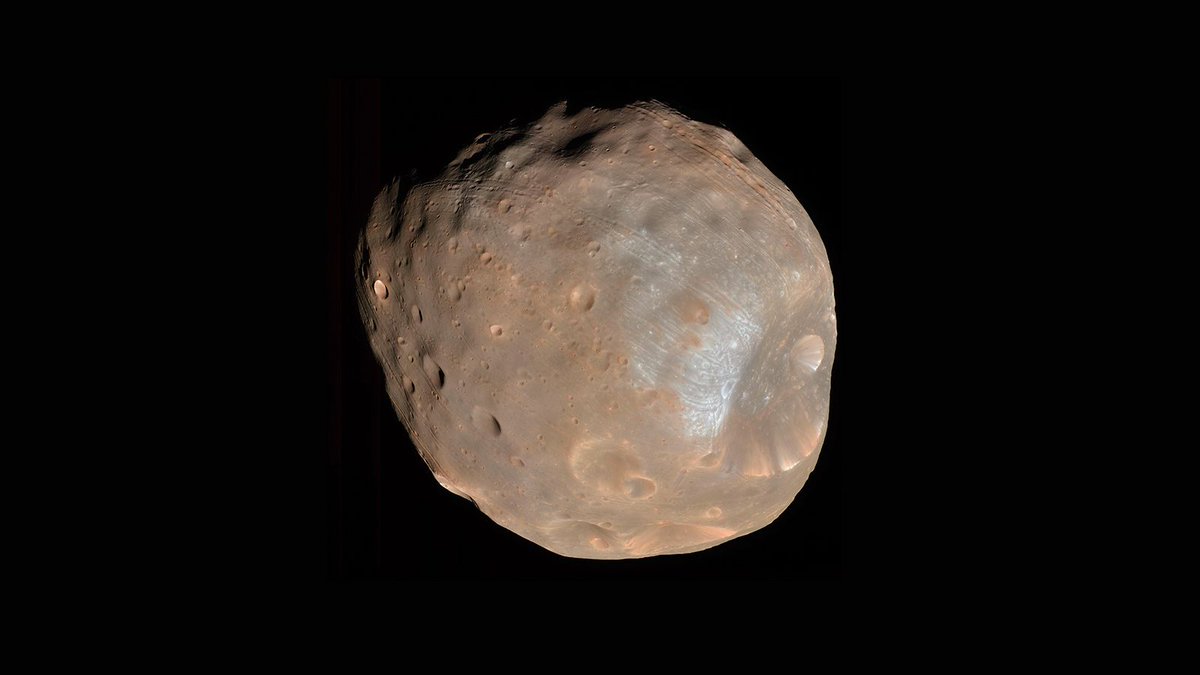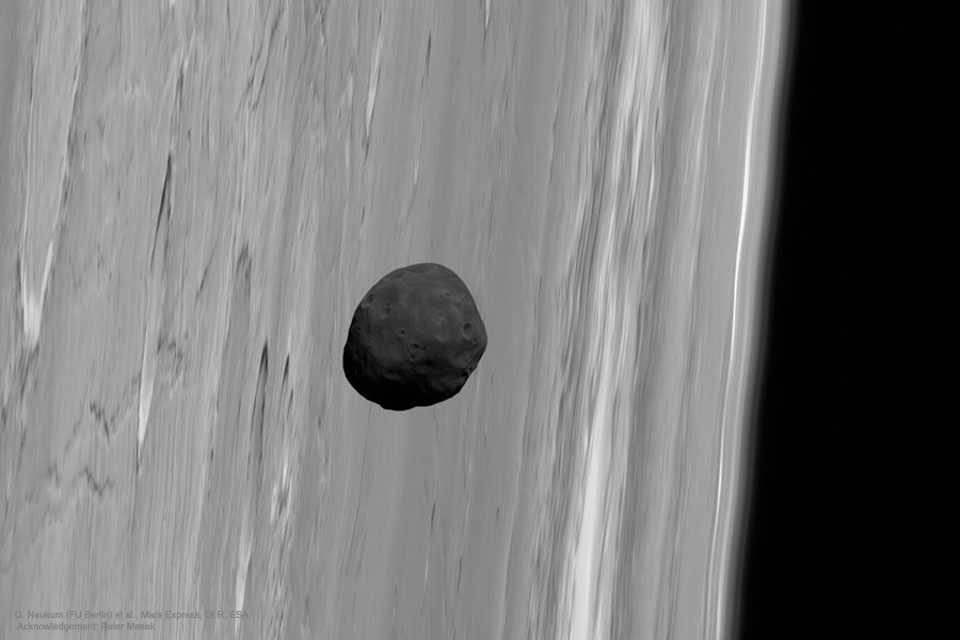The search for Martian life has been ongoing for decades. Various landers and rovers have searched for biosignatures or other hints that life existed either currently or in the past on the Red Planet. But so far, results have been inconclusive. That might be about to change, though, with a slew of missions planned to collect even more samples for testing. Mars itself isn’t the only place they are looking, though. Some scientists think the best place to find evidence of life is one of Mars’ moons.
Continue reading “The Best Evidence for Life on Mars Might be Found on its Moons”Japan’s Mission to Phobos Will Also Bring a Sample Home by 2029
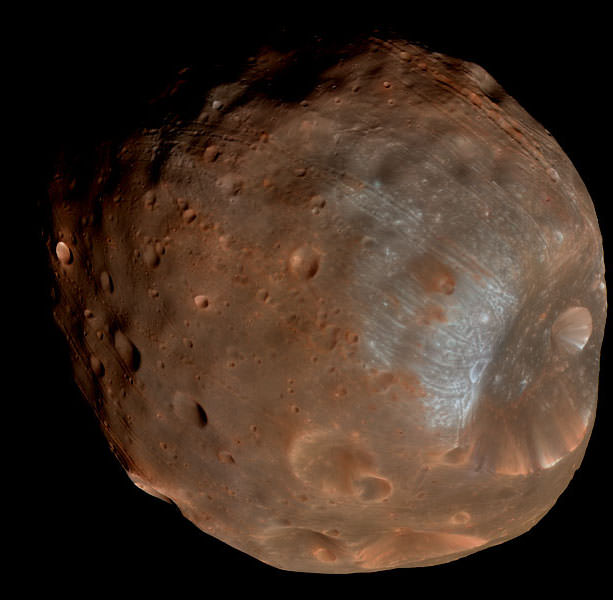
Japan’s space agency (JAXA) is gearing up for its Martian Moons eXploration (MMX) mission, with plans to have a sample from Mars’ moon Phobos return to Earth by 2029. Mission scientists say they hope to find clues to the origins of Mars two moons, as well as Mars itself, and possibly even traces of past life.
“We think that the Martian moon, Phobos, is loaded with material lifted from Mars during meteorite impacts,” the MMX team said on Twitter. “By collecting this Phobos sample, MMX will help investigate traces of Martian life and the new era of Martian habitability exploration in the 2020s will begin.”
Continue reading “Japan’s Mission to Phobos Will Also Bring a Sample Home by 2029”Phobos and Deimos: Two Moons, From One Source?
Running the clock back on the enigmatic pair of Martian moons Phobos and Deimos gives researchers insight to their possible origin.
A recent study provides crucial clues on the possible ‘origin story’ for the two tiny moons of Mars, Deimos and Phobos.
Modern astronomy provides us with a snapshot, a look at the present state of affairs across the solar system… but what were things like in the distant past? The existence of the two tiny moons seen orbiting Mars presents a particular dilemma for astronomers. Close up, Phobos and Deimos resemble tiny misshapen captured asteroids… but how did they get into the neat, tidy orbits that we see today?
Continue reading “Phobos and Deimos: Two Moons, From One Source?”What Could We Learn From a Mission to Phobos?
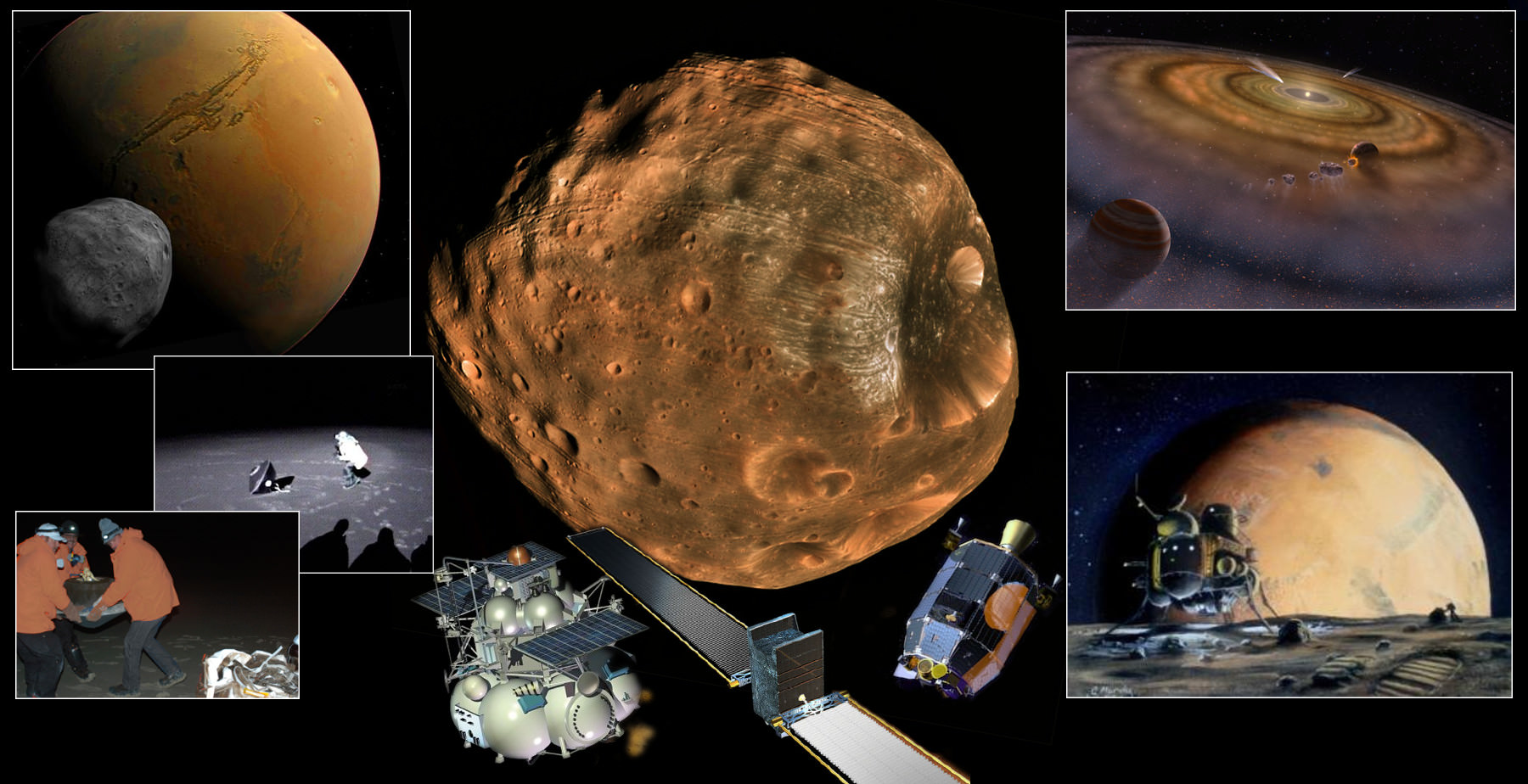
According to new research that appeared in the scientific journal Nature Geoscience, the larger of Mars’ two moons (Phobos) has an orbit that takes it through a stream of charged particles (ions) that flow from the Red Planet’s atmosphere. This process has been taking place for billions of years as the planet slowly lost its atmosphere, effectively establishing a record of Martian climate change on Phobos’ surface.
This research has provided yet another incentive for landing a mission on Phobos, something that has never been done successfully. In essence, this mission could gather sample data that would allow scientists to study this record more closely. In the process, they would be able to learn a great deal more about how Mars went from being a warmer world with liquid water to the extremely arid and cold environment it is today.
Continue reading “What Could We Learn From a Mission to Phobos?”New Pictures of Phobos, Seen in the Infrared
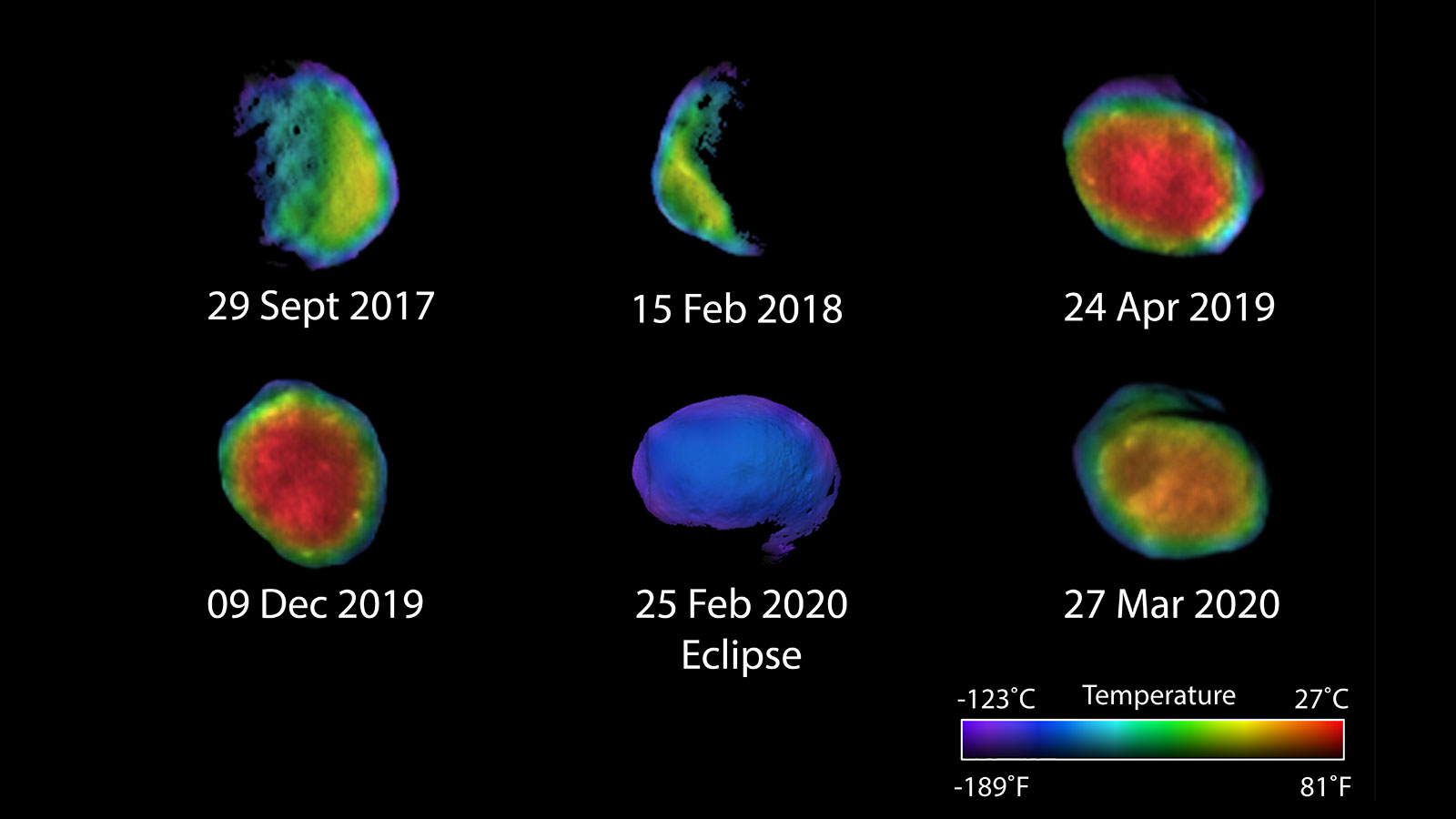
NASA’s Mars Odyssey Orbiter doesn’t get a lot of headlines lately. It was sent to Mars in 2001, to detect the presence of water and ice on Mars, or the past presence of it. It also looked at Mars’ geology and radiation. It’s been doing its job without a lot of fanfare.
Now Odyssey’s infrared camera has given us three new images of Mars’ moon Phobos.
Continue reading “New Pictures of Phobos, Seen in the Infrared”Evidence that Mars Used to Have a Ring
Mars only has two moons: Phobos and Deimos. They’re strange, for moons, little more than lumpy, potato-shaped chunks of rock. They’re much too small for self-gravitation to have made them round. And one of them, Deimos, has an unusually tilted orbit.
What does that slight tilt tell us about Deimos? About Mars?
Continue reading “Evidence that Mars Used to Have a Ring”Curiosity Looked up and Saw Phobos During the Daytime
For fans and enthusiasts of space exploration, the name Kevin Gill ought to be a familiar one. As a software engineer at NASA’s Jet Propulsion Laboratory who specializes in data visualization and analysis, he has a long history of bringing space exploration to life through imagery. Among his most recent offerings is a very interesting pic taken by the Curiosity rover early in its mission.
Continue reading “Curiosity Looked up and Saw Phobos During the Daytime”Mars Express Takes Photos of Phobos as it Flies Past
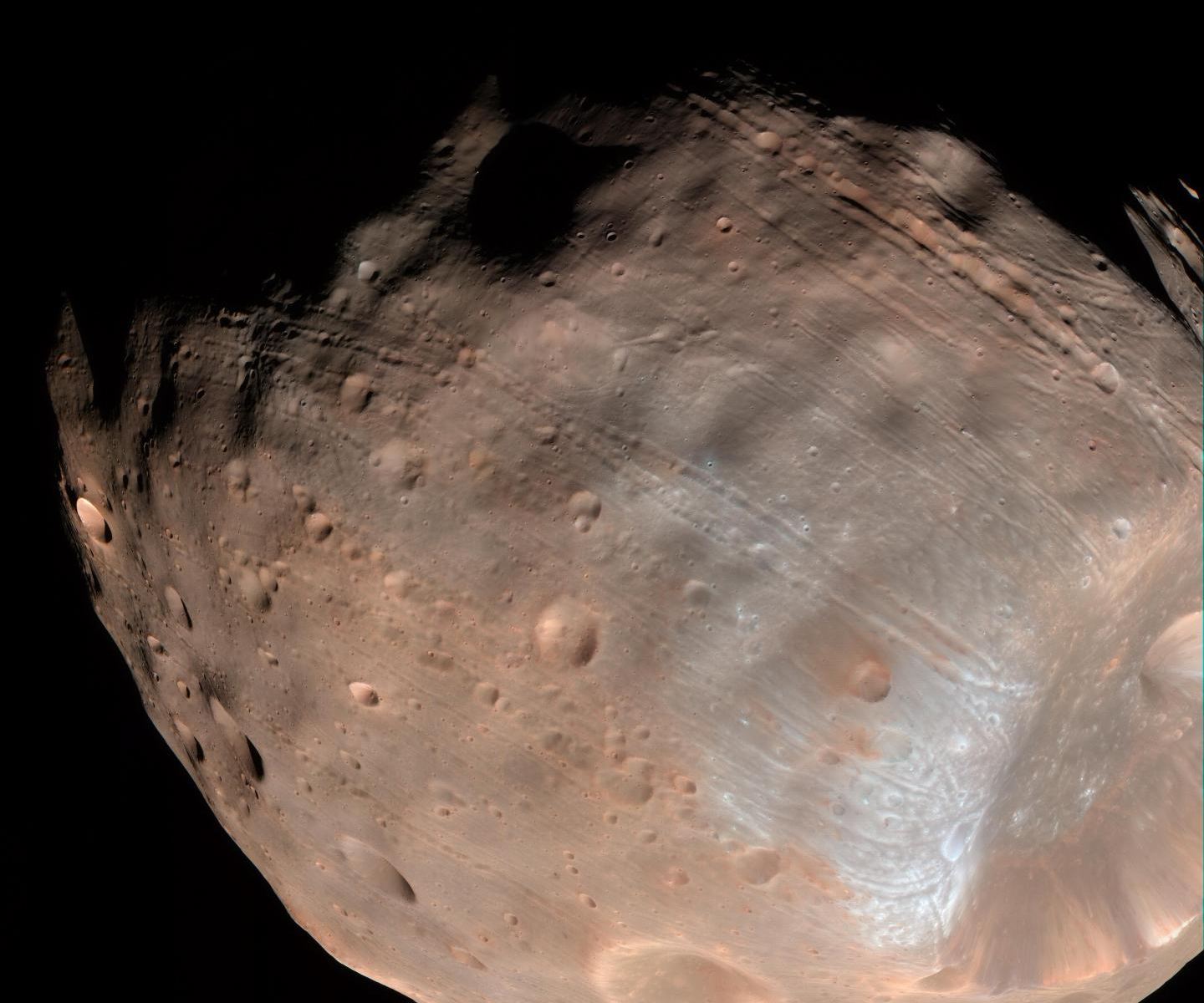
The ESA’s Mars Express Orbiter is no stranger to the Martian moon Phobos. The spacecraft was launched in June 2003 and has been in orbit around Mars for 16 years. During its long time at Mars, it’s captured detailed images of Phobos, and helped unlocked some of that Moon’s secrets.
In a new sequence of 41 images captured during a recent fly-by, the Mars Express’ High Resolution Stereo Camera imaged Phobos from different angles, capturing images of the moon’s surface features, including the Stickney crater.
Continue reading “Mars Express Takes Photos of Phobos as it Flies Past”Want To Explore Mars? Send Humans To The Moons Of Mars First: Phobos And Deimos
Humans to Mars. That’s the plan right? The problem is that sending humans down to the surface of Mars is one of the most complicated and ambitious goals that we can attempt. It’s a huge step to go from low Earth orbit, then lunar landings, and then all the way to Mars, a journey of hundreds of millions of kilometers and 2 years at the least.
Continue reading “Want To Explore Mars? Send Humans To The Moons Of Mars First: Phobos And Deimos”Mars Odyssey Reveals Phobos Using THEMIS
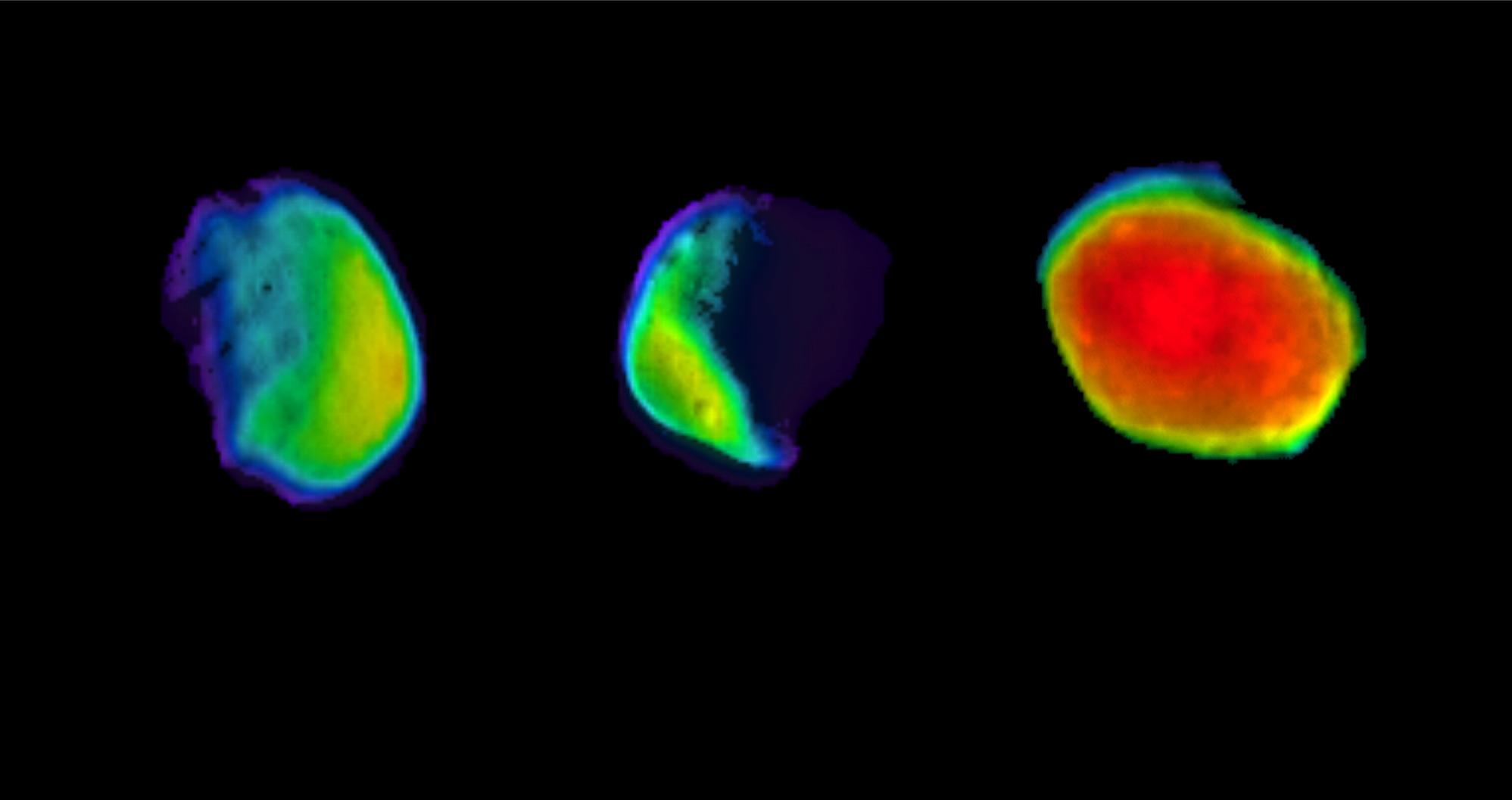
Welcome to the moons of Mars, as you’ve never seen them.
NASA’s aging 2001 Mars Odyssey orbiter recently snapped some unique views of the twin moons Phobos and Deimos, in an effort to better understand their texture and surface composition. The images are courtesy of the spacecraft’s THEMIS (the Thermal Emission Imaging System) heat sensitive instrument, and show the thermal gradient across the surface of the moons in color. Odyssey has been studying the moons of Mars since September 2017. The recent images of Phobos taken on April 24, 2019 are especially intriguing, as they occurred during full illumination phase.
Continue reading “Mars Odyssey Reveals Phobos Using THEMIS”
